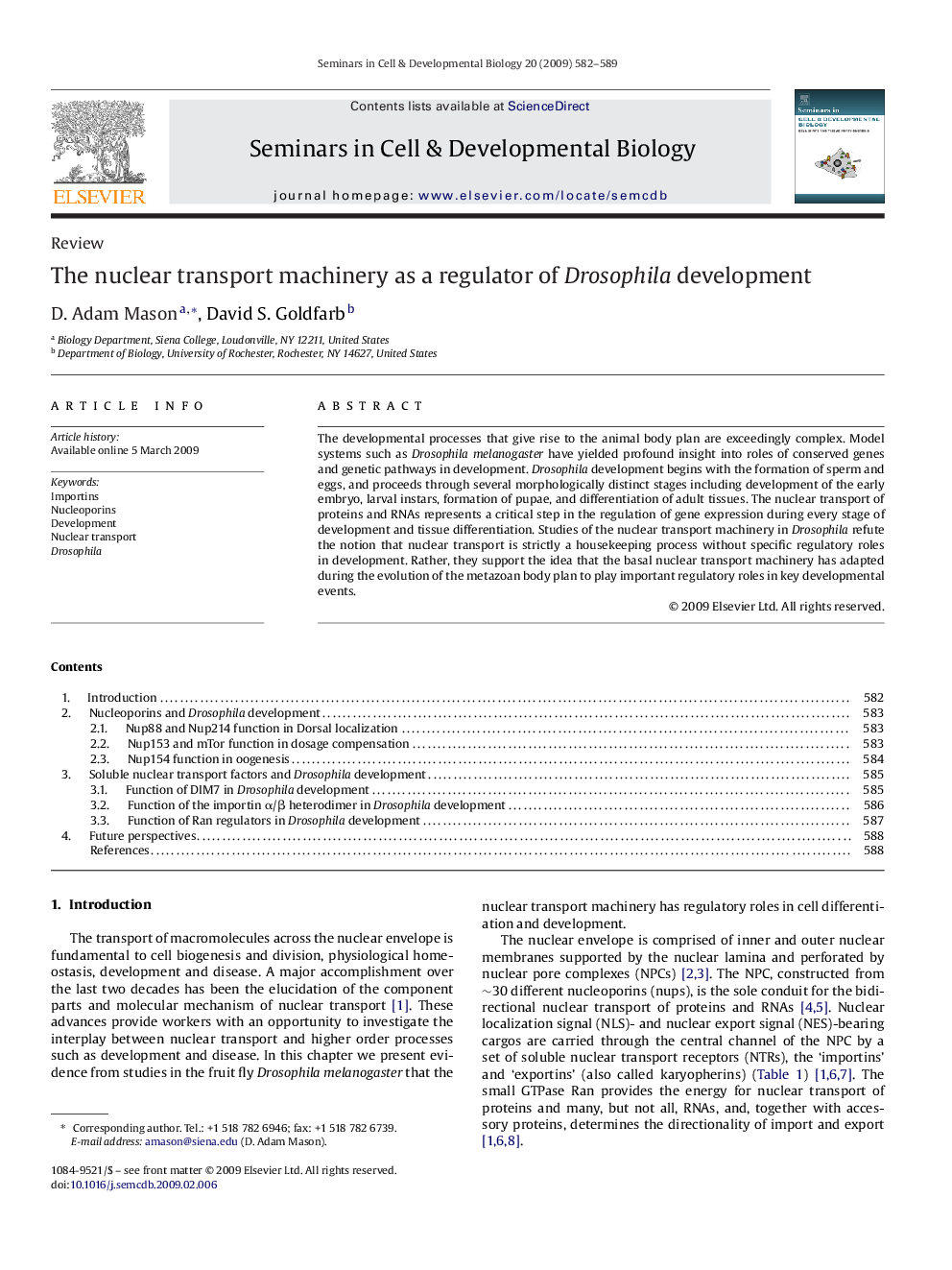| Article ID | Journal | Published Year | Pages | File Type |
|---|---|---|---|---|
| 2203115 | Seminars in Cell & Developmental Biology | 2009 | 8 Pages |
Abstract
The developmental processes that give rise to the animal body plan are exceedingly complex. Model systems such as Drosophila melanogaster have yielded profound insight into roles of conserved genes and genetic pathways in development. Drosophila development begins with the formation of sperm and eggs, and proceeds through several morphologically distinct stages including development of the early embryo, larval instars, formation of pupae, and differentiation of adult tissues. The nuclear transport of proteins and RNAs represents a critical step in the regulation of gene expression during every stage of development and tissue differentiation. Studies of the nuclear transport machinery in Drosophila refute the notion that nuclear transport is strictly a housekeeping process without specific regulatory roles in development. Rather, they support the idea that the basal nuclear transport machinery has adapted during the evolution of the metazoan body plan to play important regulatory roles in key developmental events.
Related Topics
Life Sciences
Biochemistry, Genetics and Molecular Biology
Cell Biology
Authors
D. Adam Mason, David S. Goldfarb,
